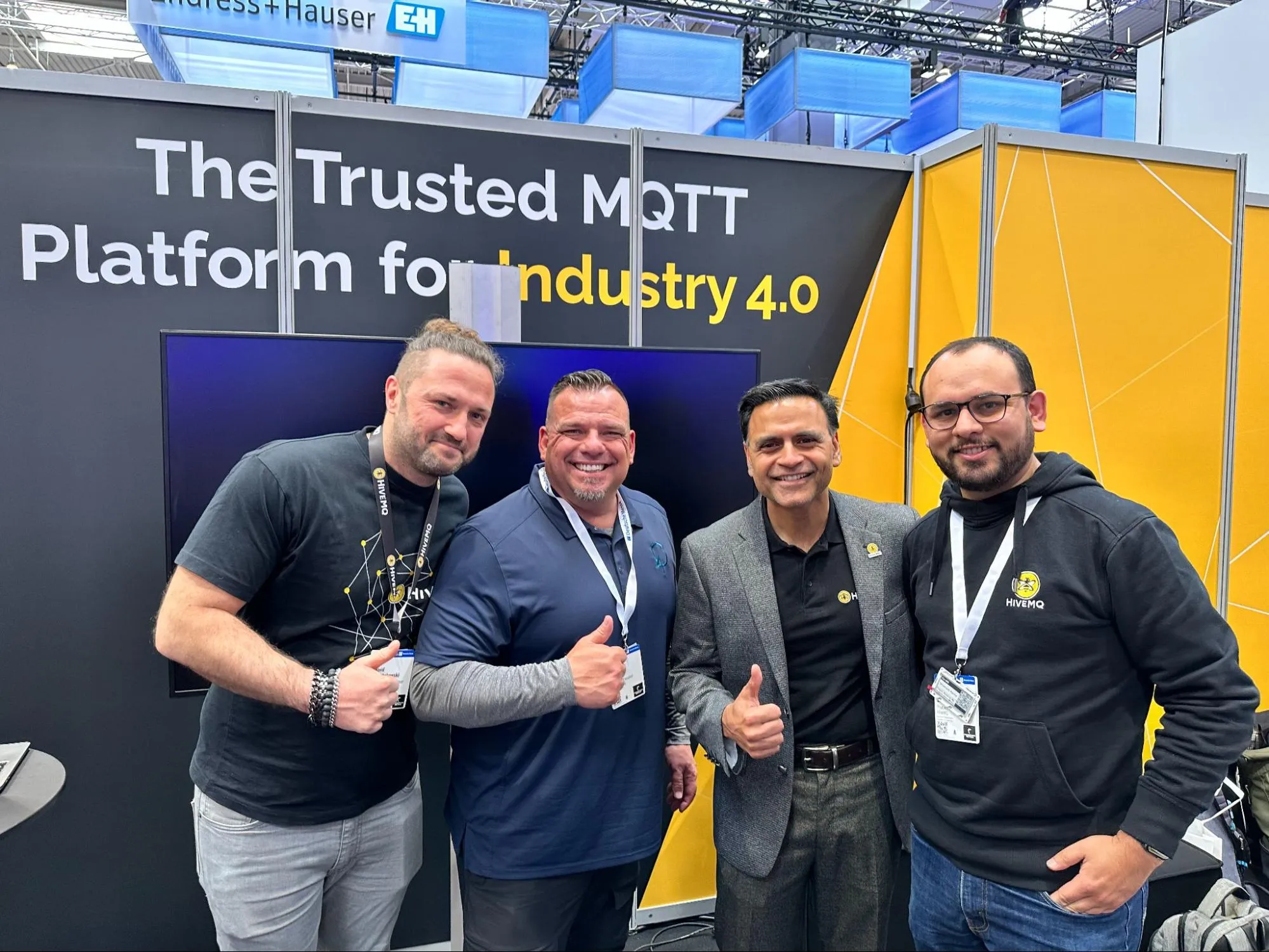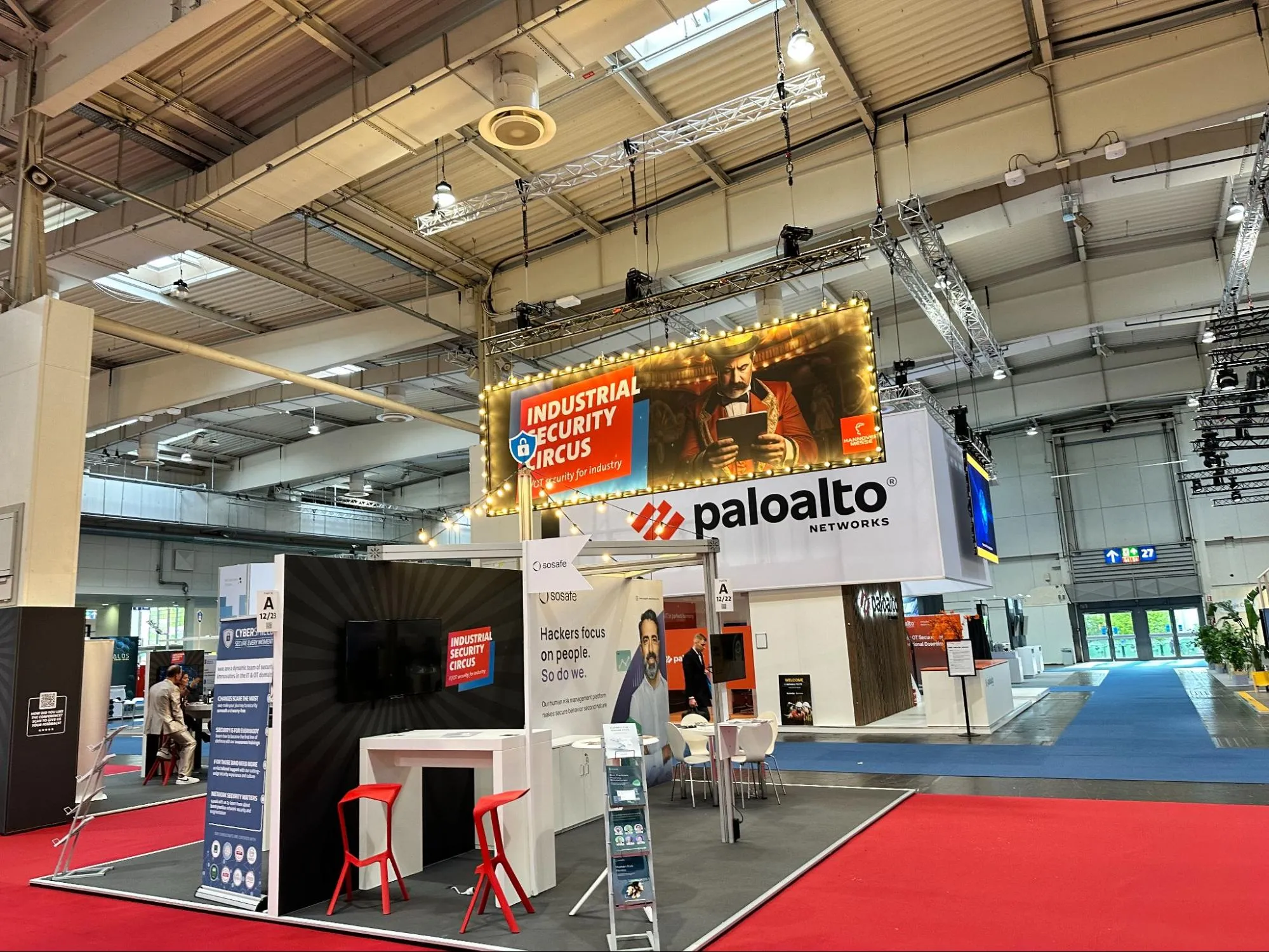Hannover Messe 2024 - A Journey of Smart Manufacturing from Sensor to Cloud
Hannover Messe is the world’s largest industrial fair with more than 130,000 visitors from 150 countries, 4,000 exhibiting companies, 17 halls, 300 startups and over 300 economic and political delegations.
At this year’s event, I gleaned insights from visiting the various exhibits, talking to visitors at the HiveMQ booth and interacting with peers, influencers, and others. There were so many trends and topics covered by the exhibiting companies that fueled interest and excitement amongst attendees.
In this blog, I’ll dive into a few of those areas to expand on what I learned from the show floor:
Industrial Internet of Things (IIoT) including edge, edge to cloud, cloud connectivity;
Data Fabric including industrial data ops, Unified Namespace (UNS);
Standardization for industrial hardware, software, infrastructure;
Energy including renewables, hydrogen etc;
And Industrial Security.
What’s New in the World of IIoT
It was no surprise that a lot of major software companies like AWS, Google, Microsoft, SAP and mid-size players in the IIoT value chain like HiveMQ, HighByte, and Litmus centered their conference presence around IIoT. The bigger and more welcome surprise was how traditional PLC, controller, robotics, industrial server and hardware manufacturers dedicated a whole lot of their booth space to IIoT initiatives.
The key industrial use cases showcased at the event were:
Condition monitoring - the real-time monitoring of the condition of the machines and creating alarms and alerts if any exceptions happen;
Predictive maintenance - providing real-time algorithms at the edge to predict failures of machines and enabling more comprehensive and sophisticated cloud analytics using AI/ML to provide more insights into machine failures based on many sample sizes and maintenance data.
A lot of companies showed their impressive new features and initiatives. A few highlights:
Siemens showcased their smart manufacturing initiatives and their Industrial Data Hub, an edge ecosystem and marketplace that allows southbound and northbound connectivity for IIoT from their devices and other hardware vendors.
Beckhoff dedicated a large part of their floor showcasing their motion control robotics solution; web-based HMI software; IoT connectivity standardization through I/O Link, OPC UA and MQTT; cloud-based connectivity to Azure and AWS, analytics workflows, and Edge computing capabilities.
Schneider Electric had an impressive display of the IIoT solutions mainly using their acquisition of Aveva. They showcased a cloud-based Industrial Intelligence platform named Connect offering remote monitoring, visualization/reporting, AI/ML and other features.
Dell had a very comprehensive setup of their Edge ecosystem with their NativeEdge solution which offered an automated, secure, multi-cloud edge operations software platform that helps businesses centrally manage and securely scale their edge across multiple locations.

Weaving the Data Fabric
At the event, the topic of data fabric was discussed as being the architecture that facilitates the end-to-end integration of various data pipelines and cloud environments through the use of intelligent and automated systems. Solutions like edge, cloud, hybrid cloud, industrial data ops (the management of data), UNS, and advanced use cases like AI/ML were included in the Data Fabric conversation.
Google’s major theme was “What can AI do for you?” with demonstrations that enabled manufacturing operations by enabling sensors to cloud and provide cloud services including their new Google Gemini large language model (LLM) bot service. HiveMQ was a key part of this ecosystem, and we got a chance to provide a couple presentations on their mainstage to talk about how our solutions integrate with Google cloud services to enable AI. HiveMQ also had a demo at our booth showcasing how we enable the Google Gemini bot to answer common manufacturing technician questions like “Is there any alarms on my machine” or “what is the speed of the agitator on mixer 1”.
Microsoft had a similar theme about accelerating industrial transformation with AI using their Manufacturing Cloud. SAP had a very impressive booth where they showed discrete and process manufacturing demos in which they partnered with partners like Fujitsu and others to enable use cases like Digital Twins and advanced analytics.
A key aspect to the data fabric topic is UNS. There seemed to be a general consensus about UNS and its value at the event, since it enables manufacturers to contextualize all of their business data including machine data, ERP, MES, SCADA alarms, events, and others in a single location as though it was a single data stream. Manufacturers are in the initial stages of deploying UNS where they are setting up their data preparation, governance, cleansing process and attempting to map their machine data. They see value in using an MQTT broker like HiveMQ to manage their UNS. Customers appreciated HiveMQ’s solution set around Data Hub to manage the data quality and Edge to translate, consolidate, and share the information.

New Offerings in Standardization
Protocol Standards
I saw a number of organizations trying to standardize the protocols used for communication from various industrial hardware devices. Beckhoff was pushing EthernetCat and I/O Link for hardware connectivity. The Single Pair Ethernet System Alliance showcased the list of OEMs that conform to their standards for connectors and interfaces. By far the biggest presence was that of the Profinet alliance which was showing off the benefits of Profinet and the list of vendors conforming to it. On the software side, the biggest one was of course OPC Foundation who talked about their multi vendor ecosystem for field-to-cloud connectivity using OPC UA along with MQTT. The other data model sharing solution that was being promoted a lot by many vendors was Asset Administration Shell (AAS). This is being pushed as a part of the Industrie 4.0 consortium as a standardized digital representation of an asset, and as a cornerstone for the interoperability of Industrie 4.0 components organized in Industrie 4.0 systems.
Wireless Communication Standards
On the wireless communication side of things, I saw the Lora alliance with various vendors that conformed to those standards enabling low power remote communication especially in Oil and Gas use cases. I also saw 5GACIA which was promoting 5G best practices for wireless communications.
Industry Standards
I saw a number of industry standards including CESMII which stands for “Clean Energy and Smart Manufacturing Industry Institute '' sponsored by the US Department of Energy and Open Industry 4.0 Alliance which is a community of Industry 4.0 practitioners and implementers. Their members meet in work groups, where they develop, create and implement use cases based on the OI4 Reference Architecture and existing standards. HiveMQ is a proud member of this alliance.

Energy Industry Use Cases
There was an entire Energy industry section, ranging from traditional energy providers like Oil and Gas, to alternative energy providers like Solar, Wind, and Hydrogen.
The general use cases all around were sustainability, digital twins, remote monitoring, carbon capture, etc. There was plenty of talk about sustainability and alternative energy from vendors such as Oil and Gas titan, Shell. The Hydrogen section had many fuel cell vendors, test bench solution providers like Bosch, engine manufacturers like Honda, and various engineering services companies. I was specifically intrigued by the use of MQTT solutions by OEMs like Bosch to push the test data to the enterprise/cloud for analytics.

Industrial Security
Industrial Security vendors displayed their Cyber Physical Systems (CPS) which Gartner defines in their IT-OT industrial architecture as engineered systems that orchestrate sensing, computation, control, networking, and analytics to interact with the physical world while enabling safe, real-time, secure, reliable, resilient communications. Vendors like Palo Alto Networks, Keyfactor, Cisco, and others showcased some of the ways they can create trust based authentication for IoT devices as they communicate with each other and with the cloud.

Takeaways for the IIoT Community
The world of Smart Manufacturing and Industrial Automation is converging and constantly evolving. Hardware OEMs, SIs, technology providers, connectivity providers and standards bodies are coming together with solutions that seem to take steps to address the various use cases that customers have. More needs to be done to simplify architectures and consumption models so that manufacturers can benefit. Open standards need to be applied in solutions at large so that they are scalable and interoperable across the different vendors.
From a HiveMQ perspective, we truly believe in open standards and have embraced MQTT as the communication standard and conform to both the 3.1.1 and 5 versions of the specification. We are part of the Oasis foundation for MQTT as well as the Eclipse Foundation for Sparkplug trying to push for better adoption of these standards so that it becomes easier for vendors and customers alike.
Hannover Messe reaffirmed our focus on these open standards, along with the need for a comprehensive platform like ours that helps industrial companies collect, communicate, and control their IoT data at scale. Download HiveMQ today and try us out.

Ravi Subramanyan
Ravi Subramanyan, Director of Industry Solutions, Manufacturing at HiveMQ, has extensive experience delivering high-quality products and services that have generated revenues and cost savings of over $10B for companies such as Motorola, GE, Bosch, and Weir. Ravi has successfully launched products, established branding, and created product advertisements and marketing campaigns for global and regional business teams.
